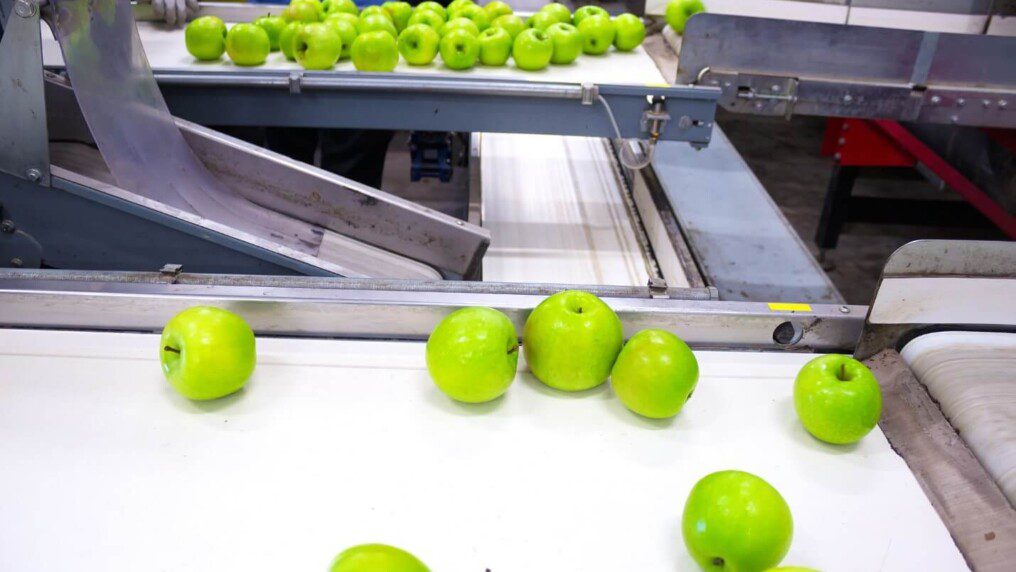
You can find many food-grade conveyor belt styles and suppliers, but they were not made to be equal. Some factors can make a difference, and you just have to know the right questions to ask when you select the right one for your system.
Know that these conveyor belts are essential in food factories. This is why the industrial conveyor belt suppliers make sure that they are easy to clean and are made specifically for food. Here are some checklists to know about these systems.
Non-Tensioned vs. Tensioned
If you want the best access to the internal components and frame, you should select a system that has belts that don’t require any pre-tension. The tensionless ones have a loose fit, and they allow you to lift the straps so you can get access to the interior of the entire system.
If you can access most of the internal components, this means that you can thoroughly sanitize the place and significantly decrease the risk of accumulating harmful bacteria in the system.
It’s best if you could obtain those that are self-tracking. Some of them don’t need to be manually monitored, especially the sprocket-driven tracking systems. If mistracking occurs, this can potentially damage the belt.
Many food products come in all sizes and shapes. They may be steamy, hot, wet, frozen, oily, greasy, sticky, and more. The temperatures and form will usually play a critical role in the selection of style and belt types.
Consider Reading: Food Service Business in California
Different Types of Blue Colored Belting
Not all blue belts are essentially the same. The blue ones may be considered food-grade, but some of the fabric and components may differ. The blue color is the standard in so many industries because manufacturers can easily track any soil impurities that may have been included from other areas. The blue homogeneous solid surfaces are usually made of plastic and contain reinforcing fiber.
When a non-homogeneous belt with reinforcing fabric and cord becomes worn or damaged, these reinforcements may be more exposed to bacteria and easily absorb various fluids. Read more about homogeneous materials on this site here.
The result will be a contamination source that will be impossible to clean and challenging to detect. Belts composed of different layers of plastic and fibers may be ripped apart, and when the fabric is exposed, this can cause problems with sanitation. What you need is a belt that’s made up of a single material to eliminate the risks. Blue homogeneous ones are often the right choice, but they may not be available all the time.
Modular Plastic Belts
You can choose the link-style modular plastic belting when the food should require cold temperatures all the time. You can also use them at warmer temperatures, and they are very durable. Materials like modular plastics offer maximum sanitation opportunities and excellent abrasion resistance, and you can also customize them to prevent corrosion.
Materials like modular plastic belting are molded together with others to allow the transfer of food products that have warm temperatures of up to 200°F or as cold as -50°F. Some styles that may be suitable for these kinds of operations may include flush grids and nub tops. You can also look for various drive flight options so you can create these belts that will meet your needs for most food applications.
Consider Reading: Capital is King in Every Industry
Metal Mesh
Some manufacturers may need to glaze, coat, bread, batter, cool, dry, wash, or drain food products. This is when metal mesh can be specifically helpful. They are very transparent, and the metal is detectable. This allows the smoother and gentle transfer of delicate and small products to their next processor. Read more about these systems on this site: https://en.wikipedia.org/wiki/Conveyor_belt.
About the PVC Varieties
In some industries, manufacturers use polyvinyl chloride conveyor belts or PVCs as one of the standards. They are used in basic applications like handling and food processing. PVCs have grown to be the third most used plastic in the world because it’s easy to use and it’s durable.
When conveyor belts are coated with PVC, know that they can handle materials and food products like fish, meat, dairy, and baking ingredients. They have abrasion resistance, and they don’t usually absorb oil, grease, and solvents. They are also great when it comes to processing vegetables and fruits as well as other special operations. If you have a food manufacturing factory with limited special requirements, this might be the best option.
For people who are unaware of the specifications for a food processing business, you can try PVC conveyor belting systems first. They are more affordable when you’re just starting up, and they are incredibly reliable compared to other materials.
Materials to Know About
- Polyurethane
- Polyolefin
- Polyvinyl Chloride
- Rubber
- Teflon
- Woven Cotton
- Polyester
- Silicone
Possible Applications
- Fruits
- Vegetables
- Seafood
- Beverages
- Pet Food
- Meat
- Poultry
- Candies
- Chocolate Bars
- Baking Products
- Dairy
- Frozen Foods
Kinds of Fabrications
- Non-Metallic Lacing
- Perforation
- Capped Edge
- V-Guide
- HF Welding Cleats
- HF Sidewalls
- Endless Splicing
Features to Know
- Latterly Stiff
- Anti-static
- Non-fray
- High heat
- Low Temperatures
- Impression Covers
- Anti-microbial
- Abrasion-resistant
- Approved by USDA/FDA
Other Factors to Consider
The processing production lines need to be subjected to hygienic requirements that are rigorous and thorough. Maintaining everything is vital because the food should be free of microbes, and the belts should be up to snuff.
It’s best to invest in equipment that will make it easier to clean the entire system. This way, you can avoid disastrous problems and maintain the hygienic condition that the investigators often require. It’s best if you could start with a conveyor that can withstand high temperatures and pressures that are often associated with chemicals, steam, and water for cleaning.
Gearboxes and drive motors should also be washdown-rated, and they should come with seals. This will reduce their need to have you remove the peripheral equipment. Other features to look for include fasteners and quick-release clamps that allow you to disassemble the entire system for quick cleaning without using special tools. You’ll also minimize the overall downtime, and you can get a faster turnaround for the equipment.
Read Also:




























